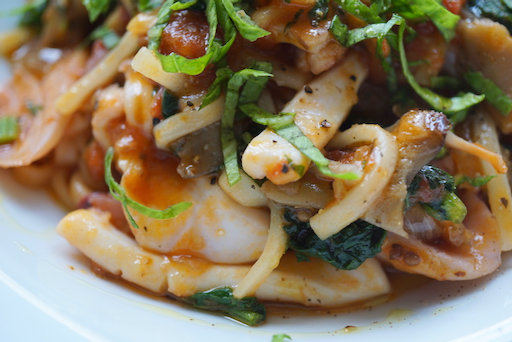This is a muffin-form of pumpkin bread my wife made a number of years ago. She is now really into muffins and rolls rather than loaves and is converting bread loaf recipes into muffin/roll recipes. This is one such example. Because of the topping, this is a bit sweeter than usual but not too sweet.
Ingredients:
Topping:
5 Tbs. packed light brown sugar,
1Tbs. all purpose flour,
1Tbs. unsalted butter softened,
1 Tsp. ground cinnamon,
1/8 Tsp. salt.
I used my fingers to mix all the ingredients together until the mixture resembled coarse sand.
Bread:
2 cups all purpose flour,
1 1/2 Tsp baking powder,
1/2 Tsp. baking soda,
1, 15 oz. can of unsweetened pumpkin puree (According direct mathematical conversion 15 oz. should equal 425 grams. But when I weighed the actual contents of the can it came out to 418 grams. I provide this information in case I don’t have a can of that exact size),
1tsp. salt,
1 1/2 tsp ground cinnamon,
1/4 tsp. ground nutmeg,
1/8 tsp. ground cloves,
2 cups granulated sugar,
1 Tbs. molasses,
1/2 cup vegetable oil,
4 oz. cream cheese cut into pieces,
4 large eggs,
1/4 cup buttermilk,
1 cup walnuts or pecans toasted and chopped.
Directions:
I mixed the flour, baking powder and baking soda together in a bowl and set it aside. I combined the pumpkin puree, salt, cinnamon, nutmeg and cloves in a large sauce pan and cooked continuously until it turned brown and reduced by about half. I removed the pan from the heat and stirred in the sugars, molasses, oil and cream cheese. I mixed it until everything was incorporated and homogeneous. I whisked together the eggs and buttermilk and added it to the pumpkin mixture. (This step requires some care not to curdle the eggs so either let the mixture cool down or temper the eggs a bit before adding.) I poured the cooled pumpkin mixture into the flour mixture to form a batter. I folded the walnuts into the batter. Using a large scoop I distributed the dough into heavily greased muffin tins and sprinkled the topping mixture on top of the muffins. I cooked the muffins in a 350 degree oven for about 25 to 30 minutes or until a skewer came out clean. Just after cooking, the muffins are very tender so I let them rest in the pan for about 20 minutes before I attempted to remove them.
This is a great seasonal treat. It has lovely pumpkin spice flavor. The texture is very tender with a nice crunch from the nuts. And muffins are just the right size for breakfast with coffee.

































